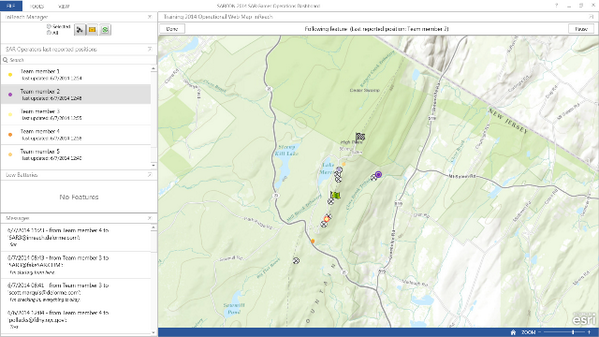Don Ferguson gave an excellent talk about minimum essential data for situational awareness and spatial analysis during search operations. He also showed the power of spatial analysis, such as travel cost modeling for increasing your theoretical probability of area.
Captain Pollackov from FDNY GIS provided a detailed account of how GIS was used for Hurricane Sandy and the Super Bowl, as well as a sneak preview of how FDNY will be using GIS in the future. Our friends at ICE-SAR were very impressed.
Jon, Jennifer, Jason, Don, Cole and myself were extremely busy at the Esri booth providing mini training sessions to old friends, but also many MRA and NASAR Teams that have not begun implementing GIS into their operations. I also presented and discussed the MRA Mission data collection system using ArcGIS Online. Here is a link to the training videos if you have not seen them already.
Finally, during the SAR Games activities on Friday, we teamed up with our friends at DeLorme to test the integration of InReach, Collector for ArcGIS, and the Operations Dashboard for real-time tracking and operational mapping. We showed this on live maps in both the Hilton command post and remote command post at High Point State Park. During this time I also hung out with the Alpha SAR Team and discussed the future of GIS in their operations.
1) The common theme across the Arkansas SAR, ASRC, MRA, and NASAR communities is the concept of remote support for search operations.
2) Disconnected capabilities are a must - you must be able to support your operation with no internet access for at least 72 hours. However, there are creative ways to leverage support from outside the command post...
3) In general, little work has been done using GIS outside of search operations. I have not spoken with a single team that has incorporated GIS into preventative search and rescue (PSAR) or rescue response (optimal siting of resources, suitability analysis, etc).
I look forward to giving a more detailed report at the SARGIS6 Meeting in a few weeks!
ps beware of the Alaskan Embassy and anything offered to you in another language.








No comments:
Post a Comment